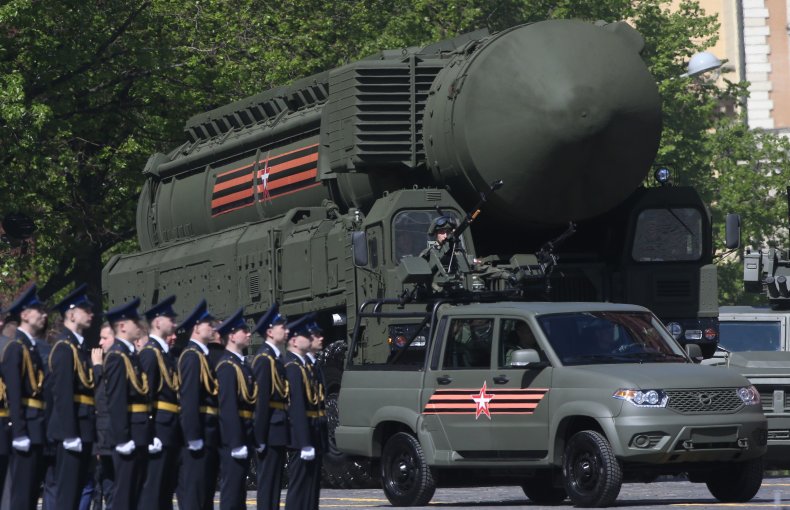ZOE STROZEWSKI
In 2018, Russia reportedly sent nuclear-capable missiles to Kaliningrad, a region sandwiched between NATO members Poland and Lithuania that does not share borders with Russia but is still part of the country's territory.
Russian state news agency RIA Novosti quoted a senior lawmaker as saying that the Iskander missiles had been deployed to the exclave on the Baltic Sea, Reuters reported at the time. (Newsweek was not immediately able to locate the original RIA report on the deployment of the nuclear-capable weapons.) The exclave's capital city, also called Kaliningrad, is just 50 miles from Poland.
The quote in the RIA report came from Vladimir Shamanov, a retired colonel-general of the Russian armed forces who leads the State Duma Defense Committee. He did not specify how many of the missiles had been sent.
"Yes, they have been deployed," RIA quoted Shamanov as saying, according to Reuters. "The deployment of foreign military infrastructure automatically falls onto the priority list for targeting."
While the Iskander missiles reportedly remain in Kaliningrad, tensions between Russia and NATO have been increasing in recent weeks and amid the ongoing war in Ukraine. Earlier this month, NATO member Lithuania applied European Union sanctions to restrict the transit of certain Russian products like coal, iron, oil and steel, prompting threats of Russian retaliation.
 In 2018, Russia reportedly sent nuclear-capable Iskander missiles to Kaliningrad, a region sandwiched between NATO members Poland and Lithuania. Above, an Iskander missile on a carrier rolls during the Victory Day Red Square Military Parade in Moscow on May 9, 2018.MIKHAIL SVETLOV/GETTY IMAGES
In 2018, Russia reportedly sent nuclear-capable Iskander missiles to Kaliningrad, a region sandwiched between NATO members Poland and Lithuania. Above, an Iskander missile on a carrier rolls during the Victory Day Red Square Military Parade in Moscow on May 9, 2018.MIKHAIL SVETLOV/GETTY IMAGESThe Iskander is also referred to as SS-26 Stone by NATO, according to the Missile Defense Advocacy Alliance, self-described as a "non-profit organization which seeks to generate public support for the continued testing, development and deployment of missile defense systems to protect our country and our allies."
It is a mobile ballistic missile system with two guided missiles that have a range of about 300 miles, or up to 500 kilometers, Reuters reported. The Iskander can carry either nuclear or conventional warheads.
Daniel Hamilton, a nonresident senior fellow at the Brookings Institution's Center on the United States and Europe, said in an episode of the Current podcast released last week that Russia has never specified whether the Iskander missiles stationed in Kaliningrad have nuclear weapons attached to them.
"Western intelligence sources say, and openly, that they do have those missiles in Kaliningrad," Hamilton said.
He added later in the podcast's episode that Russia has threatened Sweden and Finland, both of which hope to join NATO despite Russian President Vladimir Putin's opposition, by saying that it will move nuclear weapons into the Baltic region via Kaliningrad. But "Western sources believe they're already there," Hamilton said.
No comments:
Post a Comment